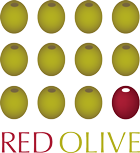Sort and structure your data, and patterns soon emerge. How you choose to interpret those patterns can be the difference between profit and loss, taking or missing an opportunity, or – on a more human scale – giving a vulnerable family somewhere warm and safe to live.
A half-way house
A housing association is a strange breed – a commercial entity but one that reinvests all of its profits back in to housing stock. Even being some of Britain’s biggest businesses – Notting Hill Housing Association’s turnover was £1.6 billion last year – housing associations have a unique and unusual duty of care to their customers.
Red Olive COO David Searro, says: “When we first started talking to the sector, the associations asked us where they could find the data they needed,” David explains. “We said to them, you have got a CRM, you have got housing, you have got HR, assets, spreadsheets… you don’t need us to show you where your data is; you need us to help you structure and understand it better.”
Red Olive has employed its six pillars of data quality to help a wide range of housing associations cleanse and restructure that data.
“It started with de-duping and updating their records, then we looked at the data itself, identifying where it came from and the stories it told. We used those stories to predict what might be on the horizon.”
Although the core of the data came from the housing associations’ customers themselves – the tenants – its value was multiplied several times over when combined with external metrics. IoT (Internet of Things) sensors built into new homes were a case in point, enabling housing associations to monitor temperatures to track who was and wasn’t using their central heating. David explains: “Anyone who can’t afford to heat their home might also have trouble paying their rent, and if a housing association knows this, it can step in with assistance, rather than waiting for customers to fall into arrears.”
Building a data model
Almost every housing provider operates core asset, housing and financial management systems and processes. With the growth in online and multi-channel interactions, accelerated by the Covid pandemic, an increasing number also employ a CRM system and a structured repairs system to keep track of the huge number of customer interactions: some of Red Olive’s larger housing customers need to handle a quarter of a million calls per year, of which more than half relate to repairs. Many are very experienced when it comes to delivering effective front-line services, but for some it was the first time they had worked explicitly with data.
“As a result, we met with a dozen housing associations to help them understand where their data needs are coming from and how we can help them progress on their individual data journeys,” David says. By the end of those meetings, each knew that, used well, the data they already held could help drive value in the housing sector.
A lot of the data captured was focused on rents received, which tenants were in arrears, how many properties were empty, and which needed repairs. Linking these common elements together within these discrete data sets quickly paid dividends.
“If a tenant suffered a broken boiler, they would call their landlord, who would book an inspection, send out an engineer, and perform whatever repairs were required,” David says. “In the past, if the tenant wasn’t happy with the result, they could raise a complaint, and may refuse to pay their rent, at which point they would fall into arrears. Now, our customers can see the cause and effect of a non-payment. As well as getting involved to check the customer is happy and that rent will be paid, it can use the information to schedule repairs and improvements that will help tenants in a more proactive way.”
By fixing this disconnect and relevant communication, Red Olive has helped housing associations better understand their clients. In the longer term, it will also help them save money by reducing the need to initiate proceedings with a view to bringing the account up to date. Those savings can be spent elsewhere, particularly on improving the housing stock to the benefit of everyone, not only the tenant who first reported the fault.
Streamlining and simplification
Each of the housing providers Red Olive works with has more than 10,000 properties on its books which, as David says, were previously far more complex to manage when the information about the tenants and the associated finances were split across discrete data silos.
Managing, simplifying and streamlining the associations’ processes for the collection, collation and analysis of that data is helping housing associations operate more efficiently, cost effectively and responsively, and ensuring their vital work continues long into the future.
For a better understanding of the data you hold, and how it can help drive your business forward, call Red Olive today on 01256 831100 or email [email protected]



